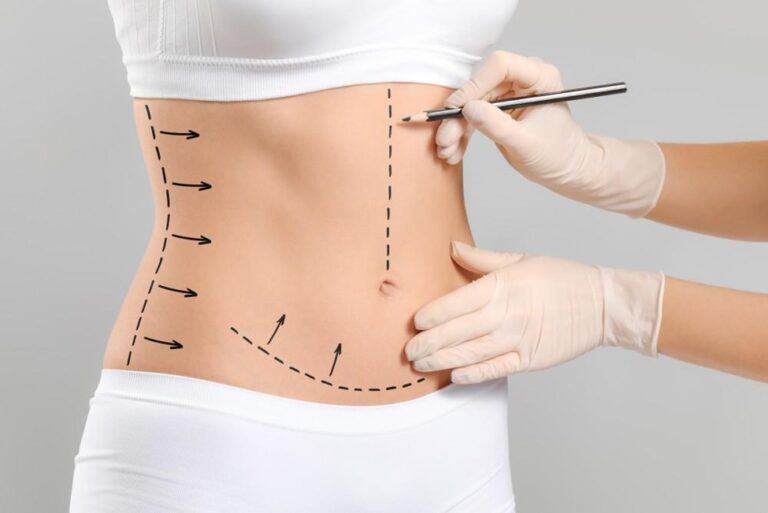
Everything You Need to Know About Liposuction: A Comprehensive Guide to Body Contouring
Liposuction is one of the most popular cosmetic surgeries globally, often chosen by individuals seeking to remove stubborn fat deposits that diet and exercise can’t seem to touch. While it’s not a substitute for weight loss, liposuction can help contour the body, enhancing the shape and boosting confidence. If you’re considering this procedure, it’s essential to understand what liposuction involves, the types available, the recovery process, and potential risks.
What is Liposuction?
Liposuction is a surgical procedure that removes excess fat from specific areas of the body using suction techniques. Common areas treated include the abdomen, thighs, hips, arms, buttocks, and even the face or neck. The goal is to reshape these areas for a slimmer and more balanced appearance.
Liposuction is often performed under general anesthesia or localized sedation, depending on the extent of the treatment. It’s vital to note that liposuction is not a weight-loss solution, but a body contouring procedure intended for individuals near their ideal weight but struggling with localized fat deposits.
Types of Liposuctions
There are various types of liposuction procedures, each using different techniques to break up and remove fat cells. Understanding these methods can help you make an informed decision about which procedure might be right for you.
1. Tumescent Liposuction: This is the most common type of liposuction. A solution containing saline, a local anesthetic, and a vasoconstrictor is injected into the treatment area. This helps to numb the area, reduce bleeding, and makes fat easier to remove. Once the solution takes effect, small incisions are made, and a cannula (a thin tube) is used to suction out the fat.
2. Ultrasound-Assisted Liposuction (UAL): In UAL, ultrasound energy is used to liquefy fat before removal. This technique can be beneficial for fibrous areas like the upper back or male chest and is sometimes used in combination with traditional liposuction.
3. Laser-Assisted Liposuction (LAL): Also known as SmartLipo, this technique uses laser energy to liquefy fat cells before they are suctioned out. The heat from the laser can also stimulate collagen production, potentially providing skin-tightening benefits.
4. Power-Assisted Liposuction (PAL): PAL involves the use of a vibrating cannula to break up fat cells, which can make the fat removal process faster and more efficient. This is a popular option for larger areas or when the patient has more significant fat deposits.
5. Suction-Assisted Liposuction (SAL): Suction-Assisted Liposuction is the traditional method and one of the oldest techniques used in liposuction. During the procedure, a cannula (a thin, hollow tube) is inserted into the targeted area through small incisions, and the fat is manually broken up by the surgeon’s back-and-forth motion. The dislodged fat is then suctioned out using a vacuum pump. This method is widely used for body contouring but may not be as precise as some of the newer techniques.
The Procedure
Liposuction is typically an outpatient procedure, allowing patients to go home the same day. The surgeon will mark the areas to be treated, administer anesthesia, and create small incisions. A cannula is inserted through these incisions to suction the fat, and the process can take anywhere from one to several hours depending on the number of areas being treated.
For patients looking for a more comprehensive approach, Lipo 360 is an advanced liposuction technique that targets the entire midsection, including the abdomen, waist, flanks, and lower back. This method offers a 360-degree contouring effect, providing patients with a more balanced and proportional look.
Recovery and Results
Recovery times can vary based on the extent of the procedure and the individual’s healing capacity. Most people can return to work within a few days and resume light activities within a week. However, strenuous activity should be avoided for at least a month.
Swelling and bruising are common after liposuction, and it may take several weeks for these to subside. The final results typically become visible after a few months, once the swelling has gone down and the body has adjusted to its new shape.
Wearing a compression garment as instructed by your surgeon can help reduce swelling and improve results. Maintaining a healthy lifestyle after liposuction is also crucial to prevent the remaining fat cells from expanding.
Conclusion
Liposuction can be a life-changing procedure for individuals looking to refine their body contours and get rid of stubborn fat. By understanding the types of liposuctions, the process involved, recovery expectations, and potential risks, you can make an informed decision about whether this procedure is right for you. Always consult with a qualified and experienced surgeon to ensure the best possible outcomes and a safe, successful procedure.















